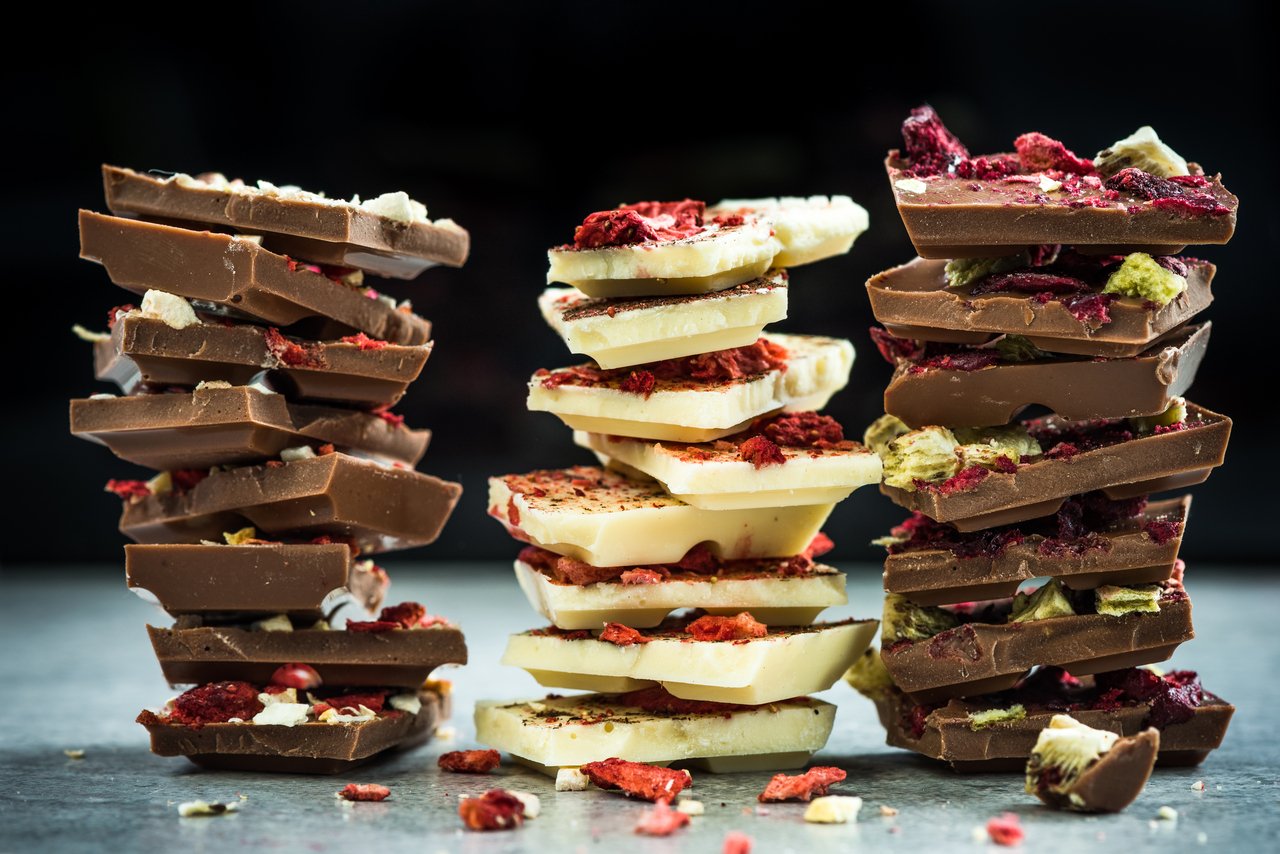How long can you keep chocolate before it is no longer suitable to eat?
Those of you who are serious about chocolate will relate to our having a ‘chocolate stash’ at home. This is the special chocolate hidden away from household members for your quiet enjoyment some time in the future. Recently Michelle found a chocolate stash she had totally forgotten about (a wonderful surprise!) which had her wondering if chocolate ‘goes off’ and if she should eat it. Through our chocolate eating and storage research, we’ve discovered this is dependent on the type of chocolate, it’s quality and where your stash is stored.

Chocolate ingredients
The lifespan of chocolate is largely dependent on its ingredients. Dark chocolate contains the highest percentage of cocoa solids and cocoa butter. Milk chocolate contains cocoa solids, cocoa butter and milk powder. White chocolate contains no cocoa solids, and it made largely of cocoa butter and milk powder. Generally all types of chocolate contain various amounts of sugar, vanilla and an emulsifier like soy lecithin that makes the chocolate easier to work with.
With all this in mind, we’ve found dark chocolate can be kept for around 2 years and still taste great. Due to the inclusion of milk powder, milk chocolate and white chocolate are fine for up to a year before the flavour will start to change. Any chocolate with inclusions like fruit, nuts, or salted caramel is likely to have a shorter expiration date. Soft centre chocolates and those made with cream, are best eaten fresh or within a couple of months.
Overall, we’ve discovered that high quality bean-to-bar chocolate has the longest shelf-life and in fact can even improve with age, just like wine. This is thanks to its natural preservatives and antioxidants (particularly in dark chocolate).
Storage
Another factor that contributes to the lifespan of chocolate is how it is stored. A consistent temperature is most important. Find a cool, dry space in a cupboard or try the drinks/wine fridge where the temperature is around 16 degrees.
If you’re storing chocolate that’s already opened, keep it wrapped as tightly as possible, then place it in an airtight container. Leaving it in its original wrapping can also help combat oxidation and moisture.
If you want to keep your chocolate stash especially safe and delicious for a longer period of time, keep it in the freezer in an airtight container or freezer bag. Just refrigerate it for 24 hours first to keep the crystallization process from happening too quickly in the freezer to avoid bloom. Once it’s frozen, it can last up to a year depending on the type of chocolate and if the bar or bag is unopened. To thaw, move it to the fridge for 24 hours, then let it come down to room temperature on the counter.
Can you eat chocolate past its ‘Best Before’ date?
An expiration date on packaged food is a legal requirement and is usually an indicator of when the quality will start to decline. This is the same for chocolate. Chocolate that has bloom which is slight white discolouration is fine to eat. Blotches or cracks on the chocolate may signal it’s a bit stale and has seen better days. If your chocolate has significant discolouration or mould, then it’s probably time to throw it away.
To reduce food wastage, it’s good to know that quality chocolate past it’s best before date can be melted and repurposed in cooking. This is often done with dark bean-to-bar chocolate that has reached it’s shelf life date. Melt it down and add it to brownies or cake and it will taste as good as the first day you bought it.
To eat, or not to eat?
So, is it safe to eat your year old chocolate stash? If the chocolate looks reasonable, it’s worth doing a taste test before it goes in the trash. Good quality chocolate like Australian-made Metiisto, Ratio and Cuvée Chocolate all have lengthy shelf lives and we are happy to confirm that if you can resist eating them immediately, they age extremely well.
